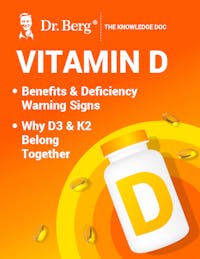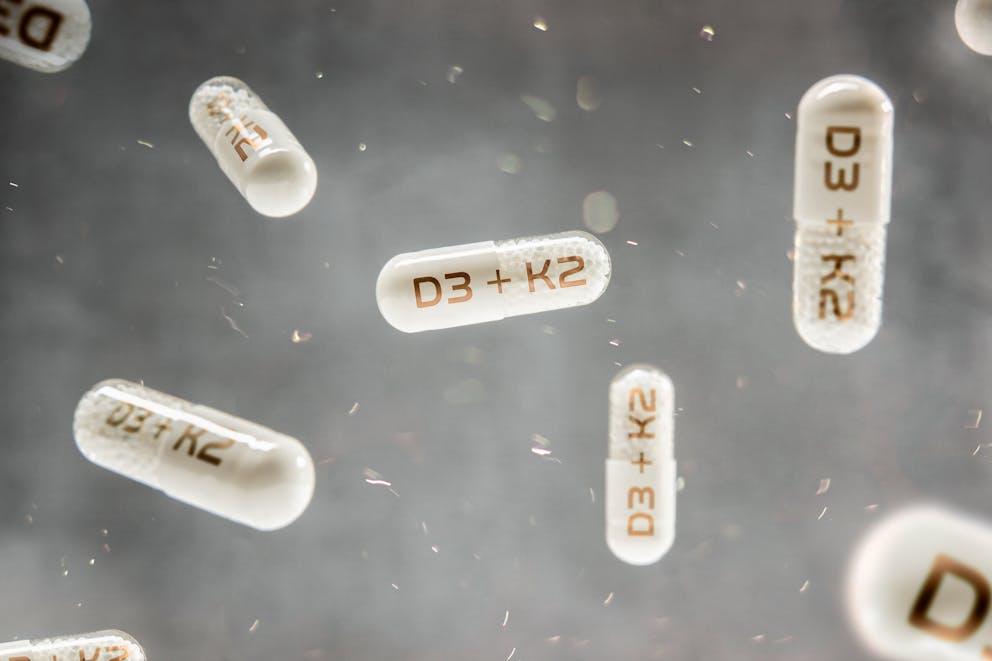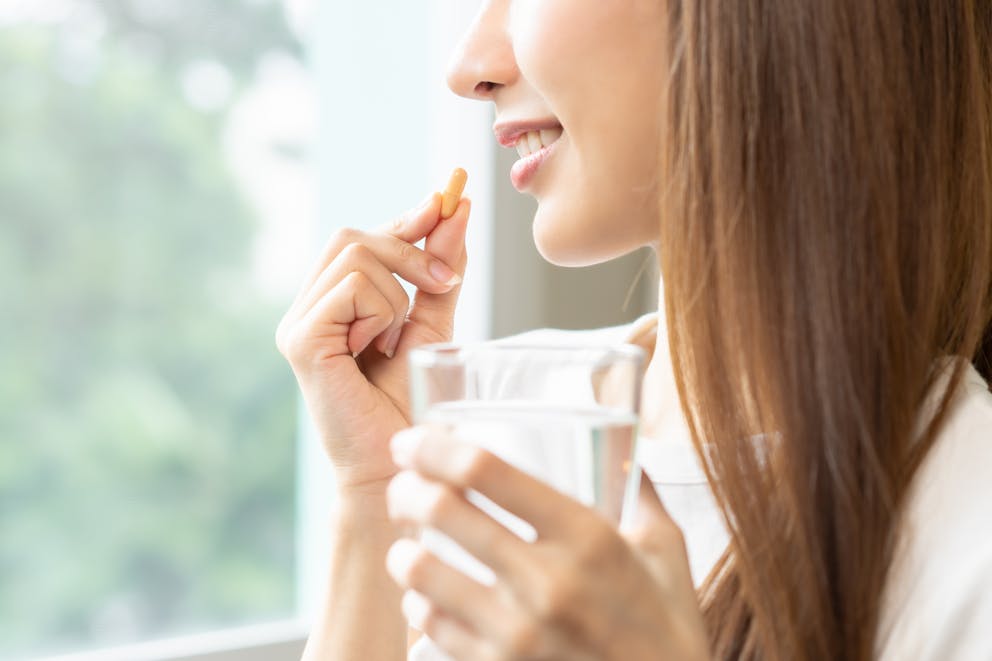The Best Ratio of Vitamin D3 to K2 – Optimal Dosage Explained

Vitamin D – Benefits and Deficiency Warning Signs
Learn to recognize early signs of vitamin D deficiency
Discover how to maintain healthy vitamin D levels
Explore common factors that can contribute to vitamin D deficiency
Understand why vitamin D3 and K2 should always be taken together
Get practical advice on how to maximize the health benefits of vitamin D

Vitamin D – Benefits and Deficiency Warning Signs
Learn to recognize early signs of vitamin D deficiency
Discover how to maintain healthy vitamin D levels
Explore common factors that can contribute to vitamin D deficiency
Understand why vitamin D3 and K2 should always be taken together
Get practical advice on how to maximize the health benefits of vitamin D

Vitamin D – Benefits and Deficiency Warning Signs
Learn to recognize early signs of vitamin D deficiency
Discover how to maintain healthy vitamin D levels
Explore common factors that can contribute to vitamin D deficiency
Understand why vitamin D3 and K2 should always be taken together
Get practical advice on how to maximize the health benefits of vitamin D

Vitamin D – Benefits and Deficiency Warning Signs
Learn to recognize early signs of vitamin D deficiency
Discover how to maintain healthy vitamin D levels
Explore common factors that can contribute to vitamin D deficiency
Understand why vitamin D3 and K2 should always be taken together
Get practical advice on how to maximize the health benefits of vitamin D

Vitamin D – Benefits and Deficiency Warning Signs
Learn to recognize early signs of vitamin D deficiency
Discover how to maintain healthy vitamin D levels
Explore common factors that can contribute to vitamin D deficiency
Understand why vitamin D3 and K2 should always be taken together
Get practical advice on how to maximize the health benefits of vitamin D

Vitamin D – Benefits and Deficiency Warning Signs
Learn to recognize early signs of vitamin D deficiency
Discover how to maintain healthy vitamin D levels
Explore common factors that can contribute to vitamin D deficiency
Understand why vitamin D3 and K2 should always be taken together
Get practical advice on how to maximize the health benefits of vitamin D

Vitamin D – Benefits and Deficiency Warning Signs
Learn to recognize early signs of vitamin D deficiency
Discover how to maintain healthy vitamin D levels
Explore common factors that can contribute to vitamin D deficiency
Understand why vitamin D3 and K2 should always be taken together
Get practical advice on how to maximize the health benefits of vitamin D

Vitamin D – Benefits and Deficiency Warning Signs
Learn to recognize early signs of vitamin D deficiency
Discover how to maintain healthy vitamin D levels
Explore common factors that can contribute to vitamin D deficiency
Understand why vitamin D3 and K2 should always be taken together
Get practical advice on how to maximize the health benefits of vitamin D

Vitamin D – Benefits and Deficiency Warning Signs
Learn to recognize early signs of vitamin D deficiency
Discover how to maintain healthy vitamin D levels
Explore common factors that can contribute to vitamin D deficiency
Understand why vitamin D3 and K2 should always be taken together
Get practical advice on how to maximize the health benefits of vitamin D

Vitamin D – Benefits and Deficiency Warning Signs
Learn to recognize early signs of vitamin D deficiency
Discover how to maintain healthy vitamin D levels
Explore common factors that can contribute to vitamin D deficiency
Understand why vitamin D3 and K2 should always be taken together
Get practical advice on how to maximize the health benefits of vitamin D

Vitamin D – Benefits and Deficiency Warning Signs
Learn to recognize early signs of vitamin D deficiency
Discover how to maintain healthy vitamin D levels
Explore common factors that can contribute to vitamin D deficiency
Understand why vitamin D3 and K2 should always be taken together
Get practical advice on how to maximize the health benefits of vitamin D

Vitamin D – Benefits and Deficiency Warning Signs
Learn to recognize early signs of vitamin D deficiency
Discover how to maintain healthy vitamin D levels
Explore common factors that can contribute to vitamin D deficiency
Understand why vitamin D3 and K2 should always be taken together
Get practical advice on how to maximize the health benefits of vitamin D

Vitamin D – Benefits and Deficiency Warning Signs
Learn to recognize early signs of vitamin D deficiency
Discover how to maintain healthy vitamin D levels
Explore common factors that can contribute to vitamin D deficiency
Understand why vitamin D3 and K2 should always be taken together
Get practical advice on how to maximize the health benefits of vitamin D

Vitamin D – Benefits and Deficiency Warning Signs
Learn to recognize early signs of vitamin D deficiency
Discover how to maintain healthy vitamin D levels
Explore common factors that can contribute to vitamin D deficiency
Understand why vitamin D3 and K2 should always be taken together
Get practical advice on how to maximize the health benefits of vitamin D

Vitamin D – Benefits and Deficiency Warning Signs
Learn to recognize early signs of vitamin D deficiency
Discover how to maintain healthy vitamin D levels
Explore common factors that can contribute to vitamin D deficiency
Understand why vitamin D3 and K2 should always be taken together
Get practical advice on how to maximize the health benefits of vitamin D

Vitamin D – Benefits and Deficiency Warning Signs
Learn to recognize early signs of vitamin D deficiency
Discover how to maintain healthy vitamin D levels
Explore common factors that can contribute to vitamin D deficiency
Understand why vitamin D3 and K2 should always be taken together
Get practical advice on how to maximize the health benefits of vitamin D

Vitamin D – Benefits and Deficiency Warning Signs
Learn to recognize early signs of vitamin D deficiency
Discover how to maintain healthy vitamin D levels
Explore common factors that can contribute to vitamin D deficiency
Understand why vitamin D3 and K2 should always be taken together
Get practical advice on how to maximize the health benefits of vitamin D

Vitamin D – Benefits and Deficiency Warning Signs
Learn to recognize early signs of vitamin D deficiency
Discover how to maintain healthy vitamin D levels
Explore common factors that can contribute to vitamin D deficiency
Understand why vitamin D3 and K2 should always be taken together
Get practical advice on how to maximize the health benefits of vitamin D

Vitamin D – Benefits and Deficiency Warning Signs
Learn to recognize early signs of vitamin D deficiency
Discover how to maintain healthy vitamin D levels
Explore common factors that can contribute to vitamin D deficiency
Understand why vitamin D3 and K2 should always be taken together
Get practical advice on how to maximize the health benefits of vitamin D

The First Signs of a Nutrient Deficiency
Learn how to recognize early symptoms related to specific nutrient deficiencies
Receive a downloadable list of early indicators your body is lacking key nutrients

The First Signs of a Nutrient Deficiency
Learn how to recognize early symptoms related to specific nutrient deficiencies
Receive a downloadable list of early indicators your body is lacking key nutrients

The First Signs of a Nutrient Deficiency
Learn how to recognize early symptoms related to specific nutrient deficiencies
Receive a downloadable list of early indicators your body is lacking key nutrients

The First Signs of a Nutrient Deficiency
Learn how to recognize early symptoms related to specific nutrient deficiencies
Receive a downloadable list of early indicators your body is lacking key nutrients

The First Signs of a Nutrient Deficiency
Learn how to recognize early symptoms related to specific nutrient deficiencies
Receive a downloadable list of early indicators your body is lacking key nutrients

The First Signs of a Nutrient Deficiency
Learn how to recognize early symptoms related to specific nutrient deficiencies
Receive a downloadable list of early indicators your body is lacking key nutrients

The First Signs of a Nutrient Deficiency
Learn how to recognize early symptoms related to specific nutrient deficiencies
Receive a downloadable list of early indicators your body is lacking key nutrients

The First Signs of a Nutrient Deficiency
Learn how to recognize early symptoms related to specific nutrient deficiencies
Receive a downloadable list of early indicators your body is lacking key nutrients

The First Signs of a Nutrient Deficiency
Learn how to recognize early symptoms related to specific nutrient deficiencies
Receive a downloadable list of early indicators your body is lacking key nutrients

The First Signs of a Nutrient Deficiency
Learn how to recognize early symptoms related to specific nutrient deficiencies
Receive a downloadable list of early indicators your body is lacking key nutrients

The First Signs of a Nutrient Deficiency
Learn how to recognize early symptoms related to specific nutrient deficiencies
Receive a downloadable list of early indicators your body is lacking key nutrients

The First Signs of a Nutrient Deficiency
Learn how to recognize early symptoms related to specific nutrient deficiencies
Receive a downloadable list of early indicators your body is lacking key nutrients

The First Signs of a Nutrient Deficiency
Learn how to recognize early symptoms related to specific nutrient deficiencies
Receive a downloadable list of early indicators your body is lacking key nutrients

The First Signs of a Nutrient Deficiency
Learn how to recognize early symptoms related to specific nutrient deficiencies
Receive a downloadable list of early indicators your body is lacking key nutrients

The First Signs of a Nutrient Deficiency
Learn how to recognize early symptoms related to specific nutrient deficiencies
Receive a downloadable list of early indicators your body is lacking key nutrients

The First Signs of a Nutrient Deficiency
Learn how to recognize early symptoms related to specific nutrient deficiencies
Receive a downloadable list of early indicators your body is lacking key nutrients

The First Signs of a Nutrient Deficiency
Learn how to recognize early symptoms related to specific nutrient deficiencies
Receive a downloadable list of early indicators your body is lacking key nutrients

The First Signs of a Nutrient Deficiency
Learn how to recognize early symptoms related to specific nutrient deficiencies
Receive a downloadable list of early indicators your body is lacking key nutrients

The First Signs of a Nutrient Deficiency
Learn how to recognize early symptoms related to specific nutrient deficiencies
Receive a downloadable list of early indicators your body is lacking key nutrients
Vitamin D3 and K2 work in synergy to maintain calcium balance, which is crucial for skeletal health and lowers the risk of arterial calcification, a leading cardiovascular disease risk factor.
Learn why you should always take vitamin K2 with D3 and discover the best ratio of vitamin D3 to K2 to promote a healthy body.

What is the best ratio of vitamin D3 to K2?
Vitamin D3 is often measured in international units (IU) instead of micrograms (mcg). 1000 IU of vitamin D3 is equal to 25 mcg of vitamin D3.
The best ratio of vitamin D3 to K2 is 1000:10—1000 IU (25 mcg) of vitamin D3 to 10 mcg of vitamin K2.
This means that you should take 10 mcg of vitamin K2 for every 1000 IU of vitamin D3.
It can be challenging to achieve the proper D3 to K2 ratio when taking these nutrients separately. It’s best to choose a supplement that contains a balanced D3 to K2 ratio of around 1000:10.
For example, if a supplement contains 5000 IU (125 mcg) of vitamin D3, it should include 50 mcg of vitamin K2.
Optimal vitamin D3 and K2 dosage
General recommendations suggest a daily dose of 600 IU of vitamin D. However, recent evidence indicates that 600 IU isn’t enough vitamin D for most adults.
A study published in Life found that a daily vitamin D intake of around 5,000 IU may be needed to correct a deficiency and maintain healthy vitamin D levels.
While vitamin K2 intake recommendations range between 120 mcg daily for men and 90 mcg for women, the most effective vitamin K2 dosage depends on how much vitamin D you take.
For example, if you take 5000 IU of vitamin D3, an ideal vitamin K2 dose would be around 50 mcg.
The best way to identify your optimal D3 and K2 dosage is to perform a simple blood test to evaluate your vitamin D status. This helps formulate an appropriate vitamin D3 dose, which subsequently will determine how much vitamin K2 you should take.
What is vitamin D3?
Vitamin D, also known as the sunshine vitamin, is produced when the skin is exposed to ultraviolet B (UVB) radiation in sunlight.
Vitamin D3 is an essential vitamin that regulates a wide range of physiological processes and is crucial for calcium balance, skeletal health, and immune system function.
In addition, vitamin D supports neurological and cognitive health, and maintaining optimal vitamin D levels is associated with a lower risk of autoimmune diseases, mood disorders, and age-related bone issues such as osteoporosis.
Vitamin D deficiency is widespread, and according to the following publication released in Photochemical & Photobiological Sciences, most people don’t get enough sun exposure to maintain healthy vitamin D status, leaving more than half of the population at risk of deficiency.
Common symptoms of vitamin D deficiency include:
If you are concerned about your vitamin D status or have developed symptoms of vitamin D deficiency, it’s crucial to consult a healthcare provider for a thorough evaluation of your health and blood tests to assess your vitamin D levels.

What is vitamin K2?
Vitamin K is a fat-soluble vitamin that naturally occurs as vitamin K1 and vitamin K2.
While vitamin K1 is predominantly found in plant foods, vitamin K2 can be obtained from animal products and fermented foods.
According to research published in Nutrients, vitamin K2 is the more active form and appears to be more effective in maintaining healthy vitamin K2 status than vitamin K1.
Vitamin K plays a crucial role in blood clotting and wound healing and is essential for cardiovascular health.
Here are four health benefits of vitamin K2.
1. Promotes normal blood clotting
Vitamin K is needed to activate proteins in the blood necessary for effective blood clotting, which is vital for wound healing and maintaining proper blood viscosity.
Lack of adequate vitamin K intake can increase the risk of excessive bleeding, which may explain why taking vitamin K2 for heavy periods has been found beneficial for women suffering from menorrhagia.
In addition, vitamin K deficiency is a common sore gums vitamin deficiency and is often associated with tender and bleeding gum tissue.

2. Supports skeletal health
Vitamin K-dependent proteins called matrix Gla protein (MGP) maintain calcium balance in the human body by facilitating calcium deposition into bone and teeth.
This helps maintain bone mass and lowers the risk of calcium accumulation in soft tissues such as blood vessels, tendons, and joints.
3. Promotes healthy skin and hair
Although vitamin K2 benefits for hair are often overlooked, maintaining healthy vitamin K2 levels may be the key to promoting healthy hair growth.
Vitamin K promotes hair follicle health and helps prevent the calcification of scalp tissue, which directly influences hair growth, and a vitamin K deficiency can lead to hair thinning and may even trigger hair loss.
Many dermatologists consider the vitamin D3 and K2 benefits for skin when formulating skincare routines.
Combining these two vitamins helps prevent the breakdown of collagen, which promotes smooth and glowing skin and may improve skin conditions, including acne and psoriasis.
4. Reproductive health
Maintaining healthy levels of vitamin K2 while pregnant has been found to support fetal bone development and may lower the risk of excessive bleeding and other complications during childbirth.

Why combine vitamin D3 and vitamin K2?
Combining vitamin D3 and K2 is crucial for bone and cardiovascular health.
Vitamin D influences calcium levels by stimulating the intestinal absorption of dietary and supplemental calcium.
“While calcium is critical for bone growth and the maintenance of bone mass, elevated levels of calcium levels increase the risk of calcium deposition in soft tissues such as arteries or joints,” explains Dr. Berg.
Vitamin K2 redirects calcium from the blood into the bones, which promotes balanced blood calcium levels and plays a vital role in lowering the risk of soft tissue calcification.
Risks of not taking vitamin K2 with vitamin D3
Taking vitamin D3 without vitamin K2 can lead to elevated levels of circulating calcium, which increases the risk of calcium accumulation in the walls of blood vessels.
Vascular calcification can lead to arterial plaque formation, a primary risk factor for cardiovascular diseases such as heart attacks and stroke.
In fact, research published in BMJ Open investigated the synergistic interplay of vitamin D and K and found that “low vitamin K and D status is associated with increased risk of cardiovascular disease and all-cause mortality compared with adequate vitamin D and K status.”

Key takeaways
Combining vitamin D3 and K2 supports healthy bones and can significantly lower the risk of vascular tissue calcification, a leading cause of atherosclerosis, heart attacks, and stroke.
Evidence suggests that the best ratio of vitamin D3 to K2 is around 1000:10. This means it’s ideal to take 10 mcg of vitamin K2 for every 1000 IU (25 mcg) of vitamin D3.
It’s recommended to choose a combined vitamin D3 and K2 supplement that provides 10 mcg of vitamin K2 for every 1000 IU of vitamin D3.
FAQ
1. What is the best ratio of vitamin D3 to K2?
The best ratio of vitamin D3 to K2 is 1000:10, which means you should take 10 mcg of vitamin K2 for every 1000 IU (25 mcg) of vitamin D3.
For example, if you are taking 5000 IU (125 mcg) of vitamin D3, it’s optimal to take 50 mcg of vitamin K2.
2. How much vitamin D3 and K2 should I take daily?
Although general recommendations suggest 600 IU of vitamin D3 daily, there is evidence that most adults require between 5,000 and 10,000 IU daily to maintain a healthy vitamin D status.
Your ideal vitamin K2 dose depends on how much vitamin D3 you are taking, and it’s best to take 10 mcg of vitamin K2 for every 1000 IU of vitamin D3.
3. How much vitamin K2 per day is too much?
There is no evidence that vitamin K can lead to toxicity, and taking up to 1000 mcg has been found to be safe and well tolerated.
However, taking more than 1000 mcg daily may be harmful for individuals with kidney disease, and it’s best to discuss high doses of vitamin K with your healthcare provider.
4. What does vitamin K2 do?
Vitamin K2 is a fat-soluble vitamin that plays a crucial role in blood clotting and wound healing and works in synergy with vitamin D to maintain calcium balance and bone health.
In addition, vitamin K lowers the risk of arterial calcification, which is linked to atherosclerosis, cardiac arrest, and stroke.
5. Is vitamin D3 and K2 good for bone health?
Vitamin D3 and K2 work together to maintain bone mass and bone density and lower the risk of bone-related health issues such as fractures, osteoporosis, and osteopenia.
6. Does vitamin K2 affect calcium absorption?
Vitamin K2 doesn’t directly affect calcium absorption. However, it does regulate calcium balance by activating proteins that redirect surplus calcium from the blood into bones and teeth.
This promotes strong bones and helps maintain normal blood calcium levels, which is associated with a lower risk of tissue calcification and cardiovascular disease.
7. When should I take vitamin K2 and D3?
Vitamin D3 and K2 can be taken in the morning or at lunchtime with a fat-containing meal, which helps enhance the absorption of fat-soluble vitamins.
Vitamin D can promote restful sleep, and taking vitamin D3 and K2 before bedtime may benefit individuals with insomnia or other sleep-related issues.
Next blog
Vitamin K2 Benefits for HairTags

Popular
08/21/2024
40.2K views
05/22/2024
36.8K views
08/19/2024
214.3K views
03/18/2024
11/21/2022




